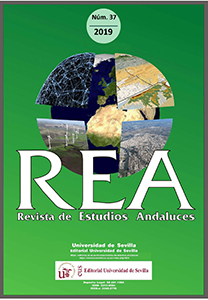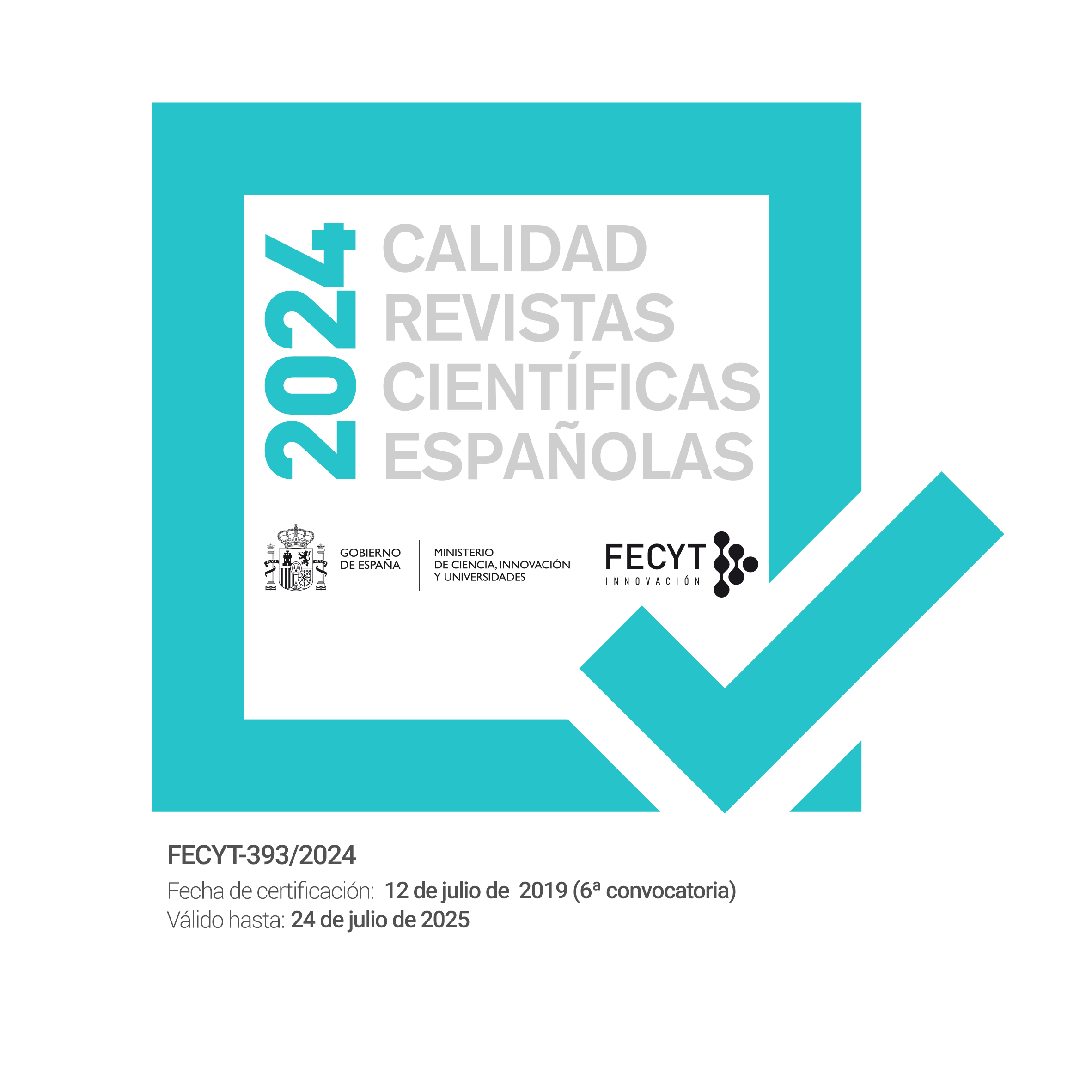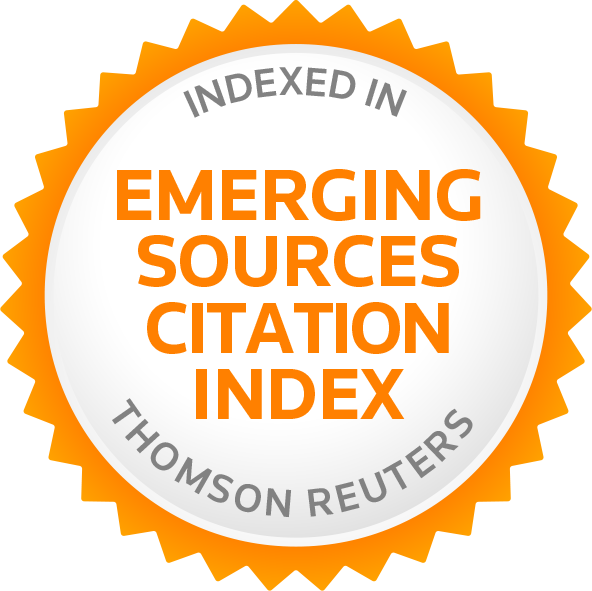Transporte Aéreo y Conectividad: Evidencias de la Emergencia de Nodos Turísticos en el Sistema Urbano Mundial
DOI:
https://doi.org/10.12795/rea.2019.i37.08Palabras clave:
Ciudades turísticas, globalización, transporte aéreo, archipiélago urbano mundialResumen
Transporte aéreo y turismo son dos de los vectores con más impronta en los procesos de globalización, existiendo una clara interdependencia entre ambos. La presente investigación ahonda en estas relaciones valorando la variabilidad del ranking de ciudades turísticas mundiales (2006- 2016) e interpretando estos resultados a la luz de diferentes indicadores de conectividad aérea, como el volumen de frecuencias y la especialización geográfica de la conexión. Se considera que ello permite determinar cómo y en qué medida se ha producido la irrupción de determinados núcleos turísticos en el sistema urbano mundial y cuál es su alcance o proyección internacional. Unos se corresponden con grandes metrópolis globales mientras que en otras localizaciones el fenómeno se debe a especializaciones funcionales muy concretas. Los resultados hablan de la eclosión de algunos nodos especialmente relevantes en la región de Asia Pacífico y de la recomposición de los pesos y significados funcionales de las grandes regiones turísticas mundiales.
Descargas
Citas
Adey, P., Budd, L. y Hubbard, P. (2007). Flying lessons: exploring the social and cultural geographies of global air travel. Progress in Human Geography, 31(6), 773-791. doi: https://doi.org/10.1177 /0309132507083508
AMADEUS (2005): Future Traveler Tribes 2020. Henley Centre Headlight Vision. Recuperado de www.amadeus.com/web/.../TravellerTribes,2.pdf.
Anton Clavé, S., Saladié, O., Cortés-Jiménez, I., Fernández Young, A. y Young, R. (2015). How different are tourists who decide to travel to a mature destination because of the existence of a lowcost carrier route? Journal of Air Transport Management, 42, 213-218. doi: https://doi.org/ 10.1016/j.jairtraman.2014.11.001
Bieger, T. y Wittmer, Al. (2006). Air transport and tourism—Perspectives and challenges. Journal of air transport management, 12(1), 40-46. doi: https://doi.org/10.1016/j.jairtraman.2005.09.007
Castells, M. (1989). The informational City. Oxford, Basil Blackwell.
Cattan, N. (1995). Attractivity and internationalisation of major European cities: the example of air traffic. Urban Studies, 32(2), 303-312. doi: https://doi.org/10.1080/00420989550013095
Cohen, E.H. (Ed.). (2008). Explorations in Thai tourism: Collected case studies. Londres: Emerald Group Publishing.
Córdoba Ordóñez, J. y Gago García, C. (2010). Latin American cities and globalisation: Change and permanency in the context of development expectations. Urban Studies, 47(9), pp. 2003-2021. doi: https://doi.org /10.1177/0042098010372680
Córdoba Ordóñez, J. y Gago García, C. (2012). Globalización, movilidad y análisis de conectividad aérea: Una herramienta para la práctica interdisciplinar. Revista de Antropología Social, vol. 21(1), 117-146. doi: http:// dx.doi.org/10.5209/rev_RASO. 2012.v21.40052
Córdoba Ordóñez, J. y Gago García, C. (2018). Ciudades para el turismo: nuevas estrategias para el desarrollo regional en tiempos de crisis. En Márquez y Jordá: Ciencia regional y Andalucía a partir de la visión del geógrafo Gabriel Marco Cano García. Sevilla, Universidad de Sevilla, pp. 713- 732. Recuperado de https://idus.us.es/xmlui/handle/11441/78274
Córdoba, J., Gago, C. y Serrano, M. (2007). Transporte aéreo y especialidad diferencial. Homenaje al Profesor J.M. Casas-Torres (pp. 45-64). Madrid: UCM.
Debbage, K. G. y Delk, D. (2001). The geography of air passenger volume and local employment patterns by US metropolitan core area: 1973–1996. Journal of Air Transport Management, 7(3), 159-167. doi: https://doi.org/10.1016/S0969-6997(00)00045-4
Derudder, B. (2006). On conceptual confusion in empirical analyses of a transnational urban network. Urban Studies, 43(11), 2027-2046. doi: https://doi.org/10.1080/00420980600897842
Derudder, B., Witlox, F., Faulconbridge, J., y Beaverstock, J. (2008). Airline networks and urban systems (Editorial). GeoJournal, 71(1), 1-3. doi: https://doi.org/10.1007/s10708-008-9151-y
Díez-Pisonero, R. (2015). Transporte aéreo, aeropuerto y ciudad Global. En El aeropuerto y la ciudad en los escenarios de la globalización. Tesis Doctoral (pp. 73-117). Madrid: Universidad Complutense. Recuperado de https://eprints.ucm.es/38236/1/T37435.pdf
Díez-Pisonero, R., Gago García, C. y Córdoba Ordóñez, J. (2016). Los aeropuertos de la globalización: espectacularización y teatralización de la infraestructura como herramienta de citymarketing. Boletín de la Asociación de Geógrafos Españoles, (72), 221- 247. doi: http://dx.doi.org /10.21138/bage.2338
Dollfus, O. (1990). Système Monde. En Brunet y Dollfus, Géographie universelle, Tomo 1. Paris: Belin.
Duval, D.T. (2013). Critical Issues in Air Transport and Tourism. Tourism Geographies, 15(3), 494-510. doi: https://doi.org/10.1080 /14616688.2012.675581
Escalona Orcao, A.I., Sáez Pérez, L.A. y Sánchez-Valverde García, B. (2017). Patterns and drivers of cultural economy in Spain´s extra-metropolitan small towns. Investigaciones Regionales-Journal of Regional Research, 38, 27-45.
Eurobarómetro (2015). Preferences of Europeans towards tourism. Report. Comisión Europea, Dirección General de Comunicación, Bruselas. Recuperado de http://ec.europa.eu/commfrontoffice/publicopinion/ flash/fl_414_sum_en.pdf
Euromonitor International (2006 y 2016). Top 100 City destination Ranking. Londres.
ExcelTur (2013). UrbanTur, 2012. Monitor de Competitividad de los destinos turísticos españoles. Recuperado de https://www.exceltur.org /wp-content/uploads/2014/10/URBANTUR-2012_INFORME.pdf
ExcelTur (2017). UrbanTur, 2016. Monitor de Competitividad de los destinos turísticos españoles. Recuperado de https://www.exceltur.org /wp-content/uploads/2017/06/URBANTUR2016-240517-documento.pdf
Gago García, C., Díez-Pisonero, R. y Córdoba Ordóñez, J. (2011). Low cost y actividad turística. Adaptaciones recientes en enclaves de alta especializacion turística. En Servicios, globalización y territorio. V Congreso Geografía de los Servicios (pp. 469-494). Las Palmas: Grupo de Servicios de la AGE,
Gago García, C. (1998). Región, Política y transporte aéreo. UCM, Madrid.
GaWC (2016). The World According to GaWC 2016. Recuperado de https://www.lboro.ac.uk/ gawc/world2016t.html
Gottdiener, M., Collins, C. y Dickens, D.R. (2000). Las Vegas: The social production of an all-American city. Wiley-Blackwell.
Hakfoort, J., Poot, T. y Rietveld, P. (2001). The regional economic impact of an airport: the case of Amsterdam Schiphol Airport. Regional Studies, 35(7), 595-604.
Hanningan, J. (1998). The Fantasy City: Pleasure and Profit in the postmoderm metropolis. Nueva York: Taylor and Francis.
Harvey, D. (2001). Espacios del capital. Hacia una geografía crítica. Madrid: Akal.
Henderson, J.C. (2006). Tourism in Dubai: Overcoming barriers to destination development. International Journal of Tourism Research, 8(2), 87-99. doi: https://doi.org/10.1002/jtr.557
Horner, S. y Swarbrooke, J. (2004). Las Vegas, USA: Portrait of a Market Leader. En International cases in tourism management (pp. 128-136). Londres: Routledge.
Hosteltur (2018). El Top 21 de los mayores puertos de cruceros del Mundo. Recuperado de https://www.hosteltur.com/124576_top-21-mayores-puertos-cruceros-mundo.html
Keeling, D. (1995). Transport and the world city paradigm. In Knox & Taylor, World Cities in a World-system (pp. 115-131). Cambridge: Cambridge University Press.
Keller, P. (2002). Introduction: air transport and tourism. 52nd AIEST Congress Publication. In: AIEST (Eds.), Air Transport and Tourism. St. Gallen, AIEST.
Khadaroo, J. y Seetanah, B. (2008). The role of transport infrastructure in international tourism development: A gravity model-approach. Tourism management, 29(5), 831-840. doi: https://doi.org/10.1016/ j.tourman.2007.09.005
King, A.D. (1995). Re-presenting the city: ethnicity, capital and culture in the twent-first century metropolis. Basingstoke: Macmillan.
Lohmann, G., Albers, S., Koch, B. y Pavlovich, K. (2009). From hub to tourist destination–An explorative study of Singapore and Dubai's aviation-based transformation. Journal of Air Transport Management, 15(5), 205-211. doi: https://doi.org/10.1016/j.jairtraman.2008.07.004
Markusen, A. y Gwiasda, V. (1994). Multipolarity and the layering of functions in world cities: New York City's struggle to stay on top. International Journal of Urban and Regional Research, 18(2), 167-193. doi: https://doi.org/10.1111/j.1468-2427.1994.tb00261.x
Master Card (2016). Global Destination Cities Index by Mastercard. Recuperado de https://newsroom.mastercard.com/wp-content/uploads/2016/09/FINAL-Global-Destination-Cities-Index-Report.pdf
Matsumoto, H. (2004). International urban systems and air passenger and cargo flows: Some calculations. Journal of Air Transport Management, vol. 10(4), 241-249. doi: https://doi.org/10.1016/ j.jairtraman.2004.02.003
Miles, S. (2012). The neoliberal city and the pro-active complicity of the citizen consumer. Journal of Consumer Culture, 12(2), 216-230. doi: https://doi.org/10.1177/1469540512446881
Navarro, C.J., Díaz-Luque, P. y Merinerom, R., (2012). Regeneración Urbana y Turismo: Una aproximación desde las escenas culturales. Recuperado de http://paperroom.ipsa.org/ papers/ paper_16812.pdf.
Njegovan, N. (2006). Elasticities of demand for leisure air travel: A system modelling approach. Journal of Air Transport Management, 12(1), 33-39. doi: https://doi.org/10.1016/j.jairtraman.2005.09.003
OECD (2009). The Impact of Culture on Tourism. OECD Publishing, Paris. doi: https://doi.org/10.1787/9789264040731-en.
Peleggi, M. (1996). National heritage and global tourism in Thailand. Annals of tourism Tourism Rresearch, 23(2), 432-448. doi: https://doi.org/10.1016/0160-7383(95)00071-2
Porter, M.E. (1998). Location, clusters, and the “new” microeconomics of competition. Business Economics, 33, 77-90.
Pratt, A.C. (2012). The cultural economy and the global city. In Taylor, Derudder et al. International handbook of globalization and world cities (pp. 265-275). Cheltenham, Edward Elgar.
Prentice, R. (2006). Tourist Motivation and Typologies. In Lew, A. A., Hall, C. M., & y Williams, A. M. A Companion to Tourism (pp. 262-279). John Wiley & Sons.
Prideaux, B. (2009). City Destinations, The New Focus of Tourism Activity. In Resort destinations: Evolution, management and development (pp. 139-170). London: Routledge.
Richards, G. (2011). Creativity and tourism: The state of the art. Annals of Tourism Research, 38(4), 1225-1253. doi: https://doi.org/10.1016 /j.annals.2011.07.008
Sassen, S. (1991). The Global City, London, New York, Tokio. Oxford: Princeton University Press.
Smith, D.A. y Timberlake, M. (1995). Conceptualising and mapping the structure of the world system's city system. Urban Studies, 32(2), 287-302. doi: https://doi.org/10.1080/00420989550013086
Smith, D.A. y Timberlake, M. (2001) World city networks and hierarchies, 1977-1997: An empirical analysis of global air travel links. American Behavioral Scientist, 44(10), 1656-1678. doi: https://doi.org/ 10.1177/00027640121958104
Taylor, P. J. y Derudder, B. (2015). World city network: a global urban analysis. Londres, Routledge.
UNWTO/OMT (2016). Panorama OMT del Turismo Mundial. Madrid: OMT.
UNWTO/OMT (2018a). World Tourism Barometer. Vol 16, Marzo- Abril. Madrid: OMT,
UNWTO/OMT (2018b). UNWTO Tourism Highlights. Madrid: OMT.
Urry, J. (1995). Consuming Places. London: Routledge.
Urry, J. (2003). Social networks, travel and talk. British Journal of Sociology, 54(2), 155–75. doi: https://doi.org/10.1080 /0007131032000080186
Vanhove, N. (2011). The Economics of Tourism Destinations. Londres: Elsevier.
Descargas
Publicado
Cómo citar
Número
Sección
Licencia
La edición electrónica de la Revista de Estudios Andaluces se ofrece en acceso abierto desde el número 28 publicado en 2011 hasta la actualidad. Las ediciones impresa y electrónica de esta Revista son editadas por la Editorial de la Universidad de Sevilla, siendo necesario citar la procedencia en cualquier reproducción parcial o total.
La Revista de Estudios Andaluces no cobra tasas por el envío de trabajos, ni tampoco cuotas por la publicación de sus artículos. La Revista es gratuita desde el momento de la publicación de cada número y sus contenidos se distribuyen con la licencia “CreativeCommons Atribución-NoComercial-SinDerivar 4.0 Internacional” , que permite al usuario de la Revista de Estudios Andaluces criterios que cumplen con la definición de open access de la Declaración de Budapest en favor del acceso abierto. Puede consultar desde aquí la versión informativa y el texto legal de la licencia. Esta circunstancia ha de hacerse constar expresamente de esta forma cuando sea necesario.







